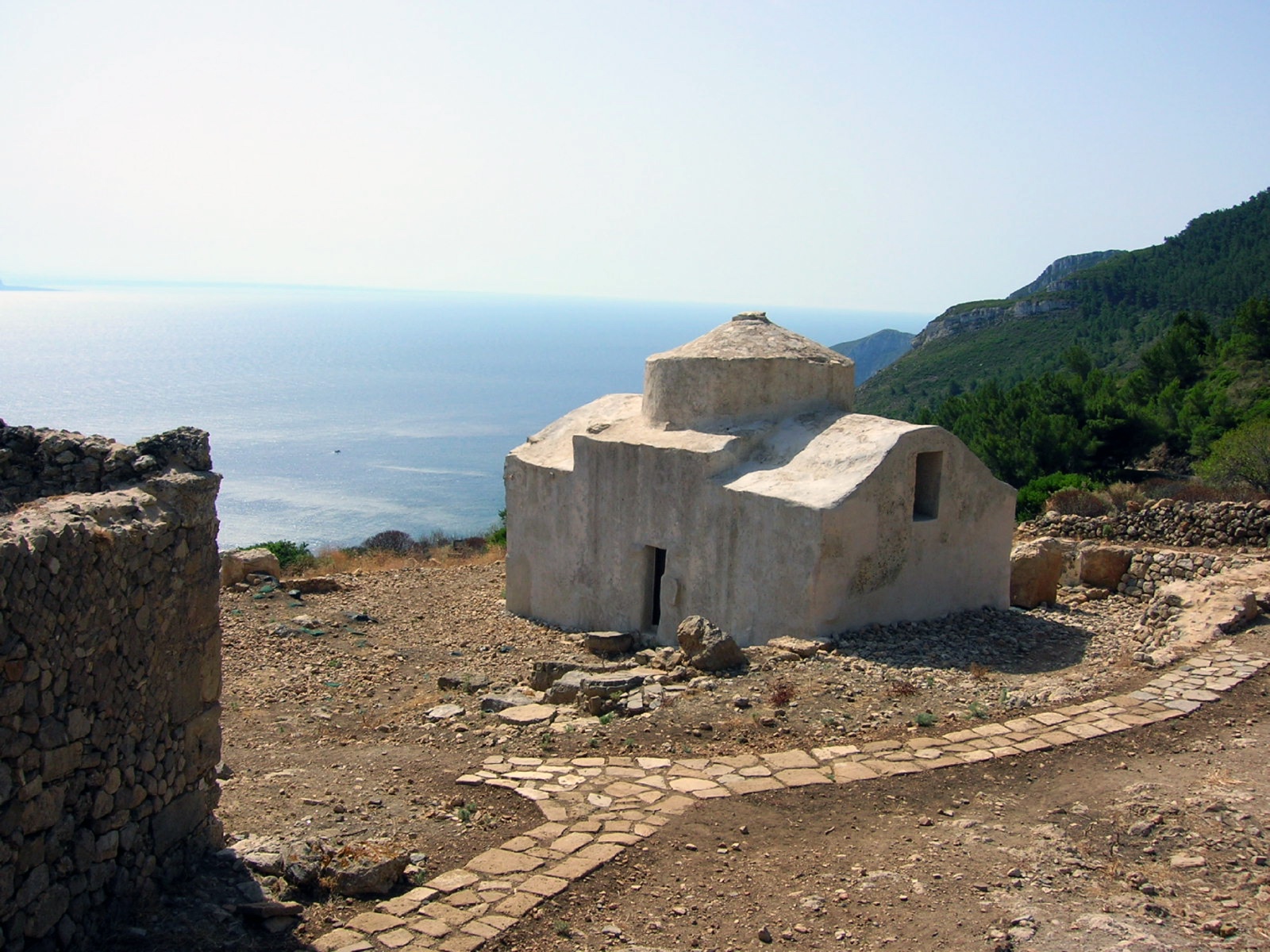Case Romane
On the westernmost island of the Egadi archipelago, stands the ancient area of buildings called Case Romane. We are in Marettimo, a fascinating territory immersed in a truly suggestive silence, where the vocation for sacredness, apparently ancient, reinforces the historical value of the municipality famous for the armistice between Romans and Carthaginians at the end of the first Punic War. It was from this position that the Romans controlled a wide route from Tunisia to Rome.
The archaeological complex is located uphill from the town to the west, 250 meters above sea level. It consists of the monumental complex of Case Romane, a rural church and a baptismal font and will be explored in detail in this contribution.
Military function
The ancient Romans used the archaeological area of Case Romane for military reasons. The defensive purpose is evident in the architecture, in particular the square structure in opus reticulatum and the presence inside the characteristic supporting arches. Still on the site, one can still see the remains of a particularly ingenious system for collecting water. According to some archaeologists, around 400 AD, the building would have been used by a group of monks persecuted by the Vandals and coming from Africa.
A touch of mystery
In the archaeological area of Case Romane, the visitor does not only notice the competence of the ancient Romans in the use of particular building techniques. It is not easy to remain indifferent to the way the stones are in perfect alignment, in particular between the Roman ruins and the remains of the nearby church, especially because it does not seem like a coincidence. In particular, there seems to be a correlation between this alignment and the spring and autumn equinox. Similar phenomena dating back to the Neolithic age have also been hypothesized in Sardinia and on the island of Malta.
The Norman era church
The church stands next to the Roman building and seems framed between the sky and the sea. Its dating is uncertain between the Byzantine and Norman era, but it is believed to have been built by Basilian monks between the 11th and 12th centuries AD. The monks chose the area because, in addition to being far from dangers from the sea, it probably allowed them to exploit an existing Roman construction. From the results of archaeological studies, a strong correlation emerges between the church and the figure of St. Simon the Apostle, to whom this place seems to have been dedicated.
A single-nave structure
The church has a rectangular structure with a main entrance. The other entrance, positioned laterally, is enriched by the presence of barrel vaults and four pillars in the center. With its length of about ten meters, it is distinguished by a single nave divided into three arches, the highest of which ends with a dome. The overall appearance recalls the Eastern style, and for this reason, it is likely that Byzantine monks built it on a reused Christian structure. The first excavation campaign dates back to the 1990s and also allowed the magnificent baptismal font to be brought to light.
The baptismal font
It is one of the most beautiful artifacts in the Mediterranean. The careful observation of this discovery partially restores all the prosperity of Sicily in the Byzantine era, as well as being an example, difficult to find elsewhere, of immersion baptismal font. The font is coated with plaster and follows in the realization the liturgy of baptism with its characteristic geometric shapes such as the circle and the octagon.
A journey to travel through time
Visiting these ancient sites in the town of Marettimo gives the visitor the emotion of feeling pleasantly transported back in time. From here, one can see the expanse of the blue sea and distinguish both Levanzo and Favignana. Immersed in the silence and the scent of resin that comes from the nearby woods, the tourist experiences a sensation of almost mystical peace. The entire area lends itself to a slow and meditative passage of time, which rewards all the efforts to reach it on foot along an uphill path that lasts about an hour.
